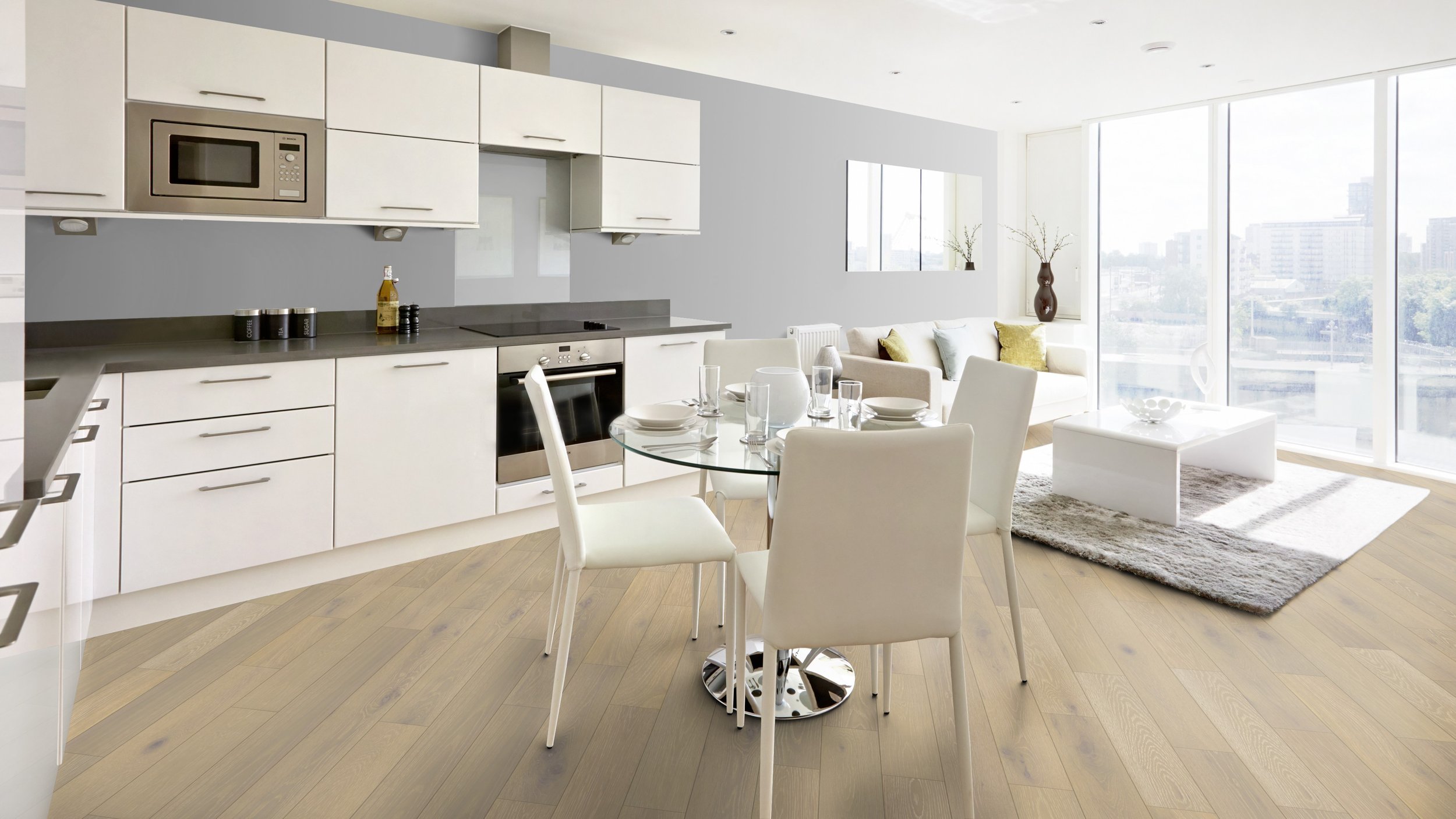Is it okay to put engineered hardwood in a kitchen?
Homeowners frequently ask if it is okay to put engineered hardwood flooring down in a kitchen. Opinions on this issue tend to vary, and the answer will depend on a multitude of factors, chiefly the customer's risk tolerance in regards to the flooring in the kitchen.
Firstly, it is important to establish the two types of hardwood flooring widely available on the market. That is, solid wood flooring and engineered wood flooring. They are different products, both made from real wood, but solid wood flooring means that the entire board is made out of a hardwood like oak or walnut, etc. Engineered wood floors are made with a softer plywood core and have a veneer of hardwood, such as oak, bonded to the core.
Engineered Hardwood Flooring in a kitchen
Solid wood flooring should not be fitted in a kitchen under any circumstance. Due to the way wood naturally moves around under different humidity and climate conditions, as well as absorbing water, solid wood boards tend to expand and contract a lot, potentially causing damage to the floor and the surrounding kitchen appliances. And with the potential for spillage, the boards are liable to warp and buckle.
Engineered wood flooring can be fitted in a kitchen. The soft plywood core is manufactured with layers at different angles to prevent natural movement, so the wood does not expand or contract as much as a solid wood floor would when humidity or temperature change occurs.
Despite the capacity for engineered wood flooring to withstand harsher conditions, good care of the flooring should be taken in a kitchen. Any spillage should be cleaned up immediately, or else the water could seep into the boards and cause buckling. Should the kitchen flood, the wood flooring will be ruined, solid wood or engineered hardwood.
Advantages of engineered hardwood flooring in a kitchen:
Natural, high quality product
Eco friendly product, 94-99% recyclable
Good heat conductivity for underfloor heating
Renewable (if click flooring). Click flooring allows you to replace damaged boards by the spot
Long lasting with good maintenance, well over 25 years
Can potentially increase the value of a property

